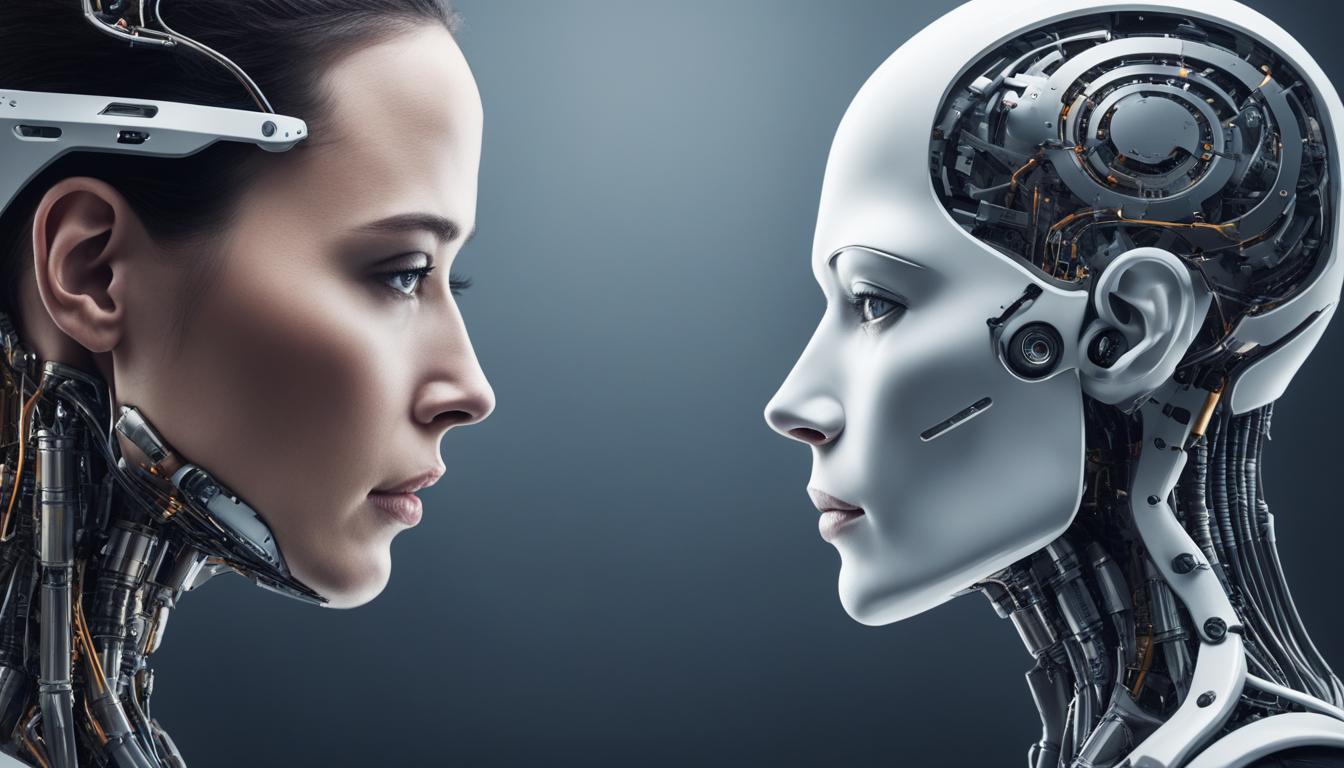Welcome to your AI knowledge guide! In this article, we will explore the limitations of artificial intelligence (AI) when it comes to understanding human emotions. While AI has made impressive advancements in many areas, there are still three emotional things that it struggles to comprehend. Understanding these limitations is crucial in recognizing the boundaries of AI’s emotional intelligence.
AI technology has the capability to capture and analyze facial expressions, voice patterns, eye movements, and neurological immersion levels to decode emotional reactions in real time. However, AI falls short when it comes to understanding cultural differences in expressing and reading emotions, leading to inaccurate conclusions and perpetuation of stereotypes on a large scale. It struggles to grasp the various meanings that emotions can have across different cultures.
Contents
- 1 The Difficulty of Understanding Emotions
- 2 The Limits of Sentiment Analysis
- 3 Emotion Recognition vs. Emotional Understanding
- 4 Conclusion
- 5 FAQ
- 5.1 What are three emotional things artificial intelligence still cannot understand?
- 5.2 What is the difficulty in understanding emotions?
- 5.3 What are the limits of sentiment analysis?
- 5.4 What is the difference between emotion recognition and emotional understanding?
- 5.5 What are the limitations of AI in understanding emotions?
- 6 Source Links
Key Takeaways:
- AI faces challenges in understanding and interpreting emotions due to their subjective and complex nature.
- Cultural differences in expressing and reading emotions pose limitations for AI’s emotional intelligence.
- Sentiment analysis, although a subfield of AI, is limited in capturing underlying emotions and nuances.
- While AI excels at recognizing emotions, it lacks true understanding and empathy.
- Artificial general intelligence may be the future path towards AI experiencing emotions as humans do.
The Difficulty of Understanding Emotions
Emotions are subjective and complex, making it difficult for AI to understand and interpret them accurately. AI lacks the ability to perceive emotional nuances and cultural differences in expressing and reading emotions. It struggles to recognize the subtext and non-verbal cues that humans use to convey their emotions. These limitations hinder AI’s understanding of emotions and its ability to replicate human emotional intelligence.
AI’s struggle to comprehend emotions arises from their inherent emotional complexity. While AI can analyze data and patterns, it often misses the underlying meaning behind emotional states. Humans have a deep awareness of their own emotions and the emotions of others, allowing them to navigate a wide range of emotional experiences with ease. AI, on the other hand, operates within a framework limited by programmed algorithms, missing the subtleties and intricacies of human emotions.
“Emotional cognition is an intricate process, and AI’s current capabilities fall short in truly grasping its essence,” explains Dr. Sarah Jones, a leading expert in AI and psychology.
The emotional complexity that humans possess encompasses a wide spectrum of feelings and responses. From joy and sadness to anger and surprise, emotions are layered and interconnected. AI’s inability to fully understand emotional nuances and context hampers its ability to respond appropriately in various situations.
In order to overcome these limitations, AI developers are continually working towards enhancing emotional cognition and intelligence in AI systems. By incorporating advanced algorithms and machine learning techniques, researchers hope to bridge the gap between human emotions and AI capabilities. However, achieving a level of emotional understanding and sophistication that rivals human intelligence remains a significant challenge.
The Limits of Sentiment Analysis
While AI has made advancements in sentiment analysis, it has its limitations when it comes to understanding emotions at a deeper level. Sentiment analysis is a subfield of natural language processing that categorizes opinions expressed in text as positive or negative. However, AI struggles to truly grasp the underlying emotions and subtext behind these statements.
AI lacks the ability to recognize cultural references, sarcasm, and linguistic nuances that can drastically alter the meaning of a statement. For example, a sarcastic remark may be interpreted as positive sentiment by AI, leading to inaccuracies in its analysis. This limitation hampers AI’s ability to accurately capture the true emotional state of an individual.
Furthermore, sentiment analysis often oversimplifies emotions by categorizing them into binary labels of positive or negative. This fails to capture the complexity and intricacies of human emotions, which can range from happiness and sadness to more nuanced feelings such as nostalgia or ambivalence.
In conclusion, while sentiment analysis is a valuable tool for gauging the overall sentiment of a text or a larger dataset, its limitations in understanding the depth and complexity of emotions should be acknowledged. AI still has a long way to go in capturing the full range of human emotions and interpreting them accurately.

Comparison of Sentiment Analysis and Emotional Understanding
| Sentiment Analysis | Emotional Understanding | |
|---|---|---|
| Recognition | Can categorize opinions as positive or negative. | Can perceive and interpret a wide range of emotions. |
| Depth | Focuses on overall sentiment, lacking emotional nuances. | Allows for a deeper understanding of emotional complexity. |
| Context | Struggles to recognize sarcasm and linguistic nuances. | Interprets emotions within the context of cultural and linguistic subtleties. |
| Accuracy | May misinterpret emotions and lead to inaccurate conclusions. | Seeks to accurately capture and interpret the true emotional state of individuals. |
Emotion Recognition vs. Emotional Understanding
AI has made significant progress in emotion recognition, utilizing advanced algorithms and machine learning to analyze facial expressions and interpret body language. This technological advancement allows AI systems to identify and classify emotions based on visual cues and patterns.
However, despite these advancements, AI lacks the ability to truly understand and empathize with human emotions. While it can simulate emotions and mimic empathy, it does not possess the inherent understanding that humans have. AI systems are limited in their capacity to comprehend the complex nature of human emotions and the contextual factors that influence emotional experiences.
“While AI can show a caring response and simulate emotion, it does not demonstrate true emotional intelligence and understanding.”
Humans have a deep level of emotional understanding that goes beyond surface-level recognition. We possess the ability to interpret and interpret complex emotional cues, including subtle non-verbal communication, contextual factors, and personal experiences. These factors contribute to our emotional intelligence, enabling us to form genuine connections and empathize with others.
While AI can contribute to emotional AI technology and perform specific tasks related to emotion recognition, it lacks the capability to truly grasp the depth and intricacies of human emotions. Our emotional experiences are multi-faceted, influenced by a variety of factors such as culture, personal history, and individual perspectives.
The development of AI systems with true emotional understanding remains a challenge. AI’s limitations in understanding emotions underscore the complexity of human experiences and the unique capabilities of human empathy.
Conclusion
Despite significant advancements in artificial intelligence (AI), it still has a long way to go in understanding human emotions. The subjective and complex nature of emotions, along with cultural differences in expressing and reading them, pose challenges for AI. Additionally, AI struggles with the subtleties and nuances of emotional experiences.
While AI can recognize and analyze emotions to some extent, it falls short in truly understanding and empathizing with human emotions. It lacks the ability to perceive emotional nuances, recognize non-verbal cues, and comprehend the underlying meaning behind statements.
Although the development of artificial general intelligence holds the potential for AI to experience emotions as humans do, achieving this level of emotional intelligence is currently a distant goal. For now, AI’s understanding of emotions remains limited, and its ability to replicate genuine emotional intelligence is lacking.
In conclusion, while AI has made remarkable progress in many areas, such as facial expression analysis and sentiment analysis, it still faces significant limitations in comprehending and responding to human emotions. As researchers continue to explore the possibilities of emotional intelligence in AI, we can anticipate future breakthroughs that could bring us closer to a deeper understanding of our own emotions and the development of emotionally intelligent AI systems.
FAQ
What are three emotional things artificial intelligence still cannot understand?
Emotional AI technology can capture the emotional reactions of individuals in real time, but it struggles to understand cultural differences in expressing and reading emotions, perceive emotional nuances and subtext, and truly empathize with human emotions.
What is the difficulty in understanding emotions?
Emotions are subjective and complex, making it challenging for AI to accurately interpret and understand them. AI lacks the ability to perceive emotional nuances, cultural differences in expressing and reading emotions, and recognize non-verbal cues and subtext that humans use to convey their emotions.
What are the limits of sentiment analysis?
While AI can categorize statements based on sentiment, it struggles to truly understand the underlying emotions and subtext. AI lacks the ability to recognize cultural references, sarcasm, and linguistic nuances that can drastically alter the meaning of a statement, limiting its analysis of emotions.
What is the difference between emotion recognition and emotional understanding?
AI has made progress in emotion recognition, including analyzing facial expressions and body language. However, it lacks the ability to truly understand and empathize with human emotions. While AI can simulate emotions and mimic empathy, it does not possess the inherent understanding that humans have.
What are the limitations of AI in understanding emotions?
Despite advancements, AI is still far from achieving a deep understanding of human emotions. AI struggles with the subjective and complex nature of emotions, cultural differences, and emotional nuances. While AI can recognize and analyze emotions to some extent, it falls short in truly understanding and empathizing with human emotions.




